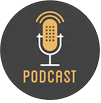Stuttering/Fluency
Stuttering affects the fluency of speech. It is typically considered a childhood disorder, but may follow an individual throughout life. Everyone produces disfluent speech at times; however, it is the frequency of the disfluent speech that causes concern.
Stuttering In Children
Onset of stuttering behaviors typically occur around 2.5 years of age in children. Stuttering may occur independently from other speech and language disorders, or it may co-exist.
Signs of Stuttering (Primary Behaviors):
- Monosyllabic whole-word repetitions (e.g., “Why-why-why did he go there?”)
- Part-word or sound/syllable repetitions
- Prolongations of sounds
- Audible or silent blocking (filled or unfilled pauses in speech)
- Words produced with an excess of physical tension or struggle
Secondary, Avoidance, Or Accessory Behaviors That May Impact Overall Communication Include:
- Distracting sounds (e.g., throat clearing, insertion of unintended sound)
- Facial grimaces (e.g., eye blinking, jaw tightening)
- Head movements (e.g., head nodding)
- Movements of the extremities (e.g., leg tapping, fist clenching)
- Sound or word avoidances (e.g., word substitution, insertion of unnecessary words, circumlocution)
- Reduced verbal output due to speaking avoidance
- Avoidance of social situations
- Fillers to mask moments of stuttering
Causes of Stuttering
Genetics and neurophysiology appear to be the main cause for stuttering. However, environmental factors, temperament, and speaking demands may also influence a child’s reactions to stuttering.
Risk Factors For Persistent Stuttering:
- Child’s gender (boys are at higher risk)
- Family history of persistent stuttering
- Time duration since onset (greater than 6 to 12 months or no improvement over several months)
- Age of onset
- Co-occurring speech and language impairment
Click here to learn more about stuttering from ASHA.
Differentiating Typical Disfluencies from Stuttering
Typical Disfluency
Speech Characteristics
- Multisyllabic whole-word and phrase repetitions
- Interjections
- Revisions
Other Behaviors
- No physical tension or struggle
- No secondary behaviors
- No negative reaction or frustration
- No family history of stuttering
Stuttering
Speech Characteristics
- Sound or syllable repetitions
- Prolongations
- Blocks
Other Behaviors
- Associated physical tension or struggle
- Secondary behaviors (e.g., eye blinks, facial grimacing, changes in pitch or loudness)
- Negative reaction or frustration
- Avoidance behaviors (e.g., reduced verbal output or word/situational avoidances)
- Family history of stuttering
Coleman, C. (2013). How can you tell if childhood stuttering is the real deal? Available from http://blog.asha.org/2013/09/26/how-can-you-tell-if-childhood-stuttering-is-the-real-deal/
How To Converse With Older Children And Adults Who Stutter:
- Don’t make remarks like: “Slow down,” “Take a breath,” or “Relax.” Such simplistic advice can be felt as demeaning and is not helpful.
- Let the person know by your mannerisms that you are listening to what he or she says – not how they say it.
- Maintain natural eye contact and wait patiently and naturally until the person is finished.
- You may be tempted to finish sentences or fill in words – try not to do so.
- Be aware that those who stutter usually have more trouble controlling their speech on the telephone. Please be patient in this situation. If you pick up the phone and hear nothing, be sure it is not a person who stutters trying to start the conversation before you hang up.
- Speak in an unhurried way – but not so slowly as to sound unnatural. This promotes good communication with everyone.
http://www.stutteringhelp.org/6-tips-speaking-someone-who-stutters
What Teachers Can Do To Support Students Who Stutter:
The following was developed by Sara Mullenmaster, revised by: Cindy S. Spillers, web master
- Meet with the child’s parents before school begins to learn about their concerns and expectations.
- Talk with the speech clinician at your school to see what suggestions he/she may have for the child.
- Encourage positive communication skills in the classroom. Do not interrupt someone when they are talking, talk for, or finish thoughts and statements for anyone else.
- Avoid, as much as possible, treating the child with disfluencies differently from others in the classroom. It is important that the child does not feel any differently than the other children by receiving “special treatment.”
- The child who stutters should be held to the same academic and social standards as the other children in the classroom.
- Commend the child when he/she participates in classroom discussions. Praise what they say, not how they say it.
- If the child is teased by classmates, make sure to talk to the child first before confronting the teasers. Listen to what the child has to say and how he/she is feeling. If the child agrees that you can speak to the teasers, pull them aside, away from the child, and tell them why their behavior is inappropriate.
- If appropriate, it may benefit the child if you talk to the class about stuttering. It is important to get permission from the child and the child’s parents.
- Do not call on students in a specific order. People who stutter build up tension and anxiety when they know their turn is coming because they anticipate that they will stutter. It is best to call on the child early on in the process.
- For oral presentations, encourage the child to practice the oral presentation requirements at home. It may even be helpful for the child to practice in the classroom to relieve some anxiety. Be sure to ask the child how they feel about doing an oral presentation and what could be done to make it a little less frightening.
Resources For Fluency Disorders (this list does not imply endorsement nor is it an exhaustive list):
- National Stuttering Association
- Stuttering Home Page Chat Room
- University of Wisconsin Family Village Stuttering Page
- Stuttering Home Page
- Stuttering Foundation of America
- The Canadian Stuttering Association
- International Stuttering Association
- K12 Academics Stuttering Page
- University College London’s Archive of Stuttered Speech (UCLASS) Speech samples from children who stutter










